The earliest neighborhoods in North Omaha were laid out on the wide, flat plain north of Cuming Street, between North 14th and North 33rd Streets. One of the earliest was the Kellom Heights neighborhood. Its unmatched heritage is lost to many Omahans, as there are few signs of its role left today. The homes, businesses, churches, synagogues and stories that made it so substantive have been demolished, obliterated and otherwise were lost to time as the City of Omaha worked so hard to take away the signs, hopes and dreams of early Omahans.

Here is what I could find about the historic Kellom Heights neighborhood. If you have more to add, please use the comments section below.
Remembering Moses F. Shinn

In the 1850s, a Methodist circuit rider named Moses Shinn bought a quarter section of land in North Omaha. Taking account of his 160 acres, he started laying out his land north of North 24th and Nicholas Streets for houses to be built. This land included Nicholas; Indiana Avenue; Caldwell, Hamilton, Charles, Seward, Franklin and Parker Streets; and it went from North 24th to North 30th Streets. (Eventually his land north of Hamilton and east of North 27th Street became part of the Long School Neighborhood.

Before he began selling his land, North 30th was the western boundary of Omaha City. Starting in the 1860s, Shinn graded streets and sold house lots, selling three additions for hundreds of homes in the next decade. Shinn also opened Omaha’s actual first cemetery, outside the boundaries of his housing development. It eventually was sold and developed as houses. When he died, Shinn was buried in the Prospect Hill Cemetery in North Omaha.
As his neighborhood was built, there were early settlers who came from the Eastern United States. These were usually second- or third-generation Americans, along with English, Canadian and German settlers. After that initial wave between 1854 and 1870, the neighborhood became more diverse.
Early Ethnic Groups

The Kellom Heights neighborhood was home to a variety of ethnic groups throughout its first 50 years. They included Russian and other Eastern European Jews; Scandinavians; English and others.
Some of the earliest settlers in Shinn’s 1st, 2nd and 3rd additions were Scandinavians. The Danish Baptist Church was at 2511 Decatur; Norwegian-Danish Methodist was at North 25th and Decatur; and the Norwegian-Danish Evangelical Lutherans had a church at North 26th and Hamilton. Being a minister himself, it should come as no surprise that Shinn built a church himself. In 1868, built the 18th Street Methodist Episcopal Church at North 23rd and Izard Streets. Shinn pastored the church until 1872, when the first minister was appointed. By 1900, the congregation disbanded and the building became the Swedish Methodist Church. Its accoutrements were taken to the Seward Street Methodist Episcopal Church, which was later absorbed into Trinity Methodist Episcopal Church, which today is part of the Tri-Community United Methodist Church.

Other early settlers in the Kellom Heights neighborhood included Russians, especially Russian Jews. The section of North 24th Street from Cuming to Hamilton was packed with Russian stores, including kosher meats, grocers, shoemakers, fishmongers and others. As late as the 1930s, as many as 20% of all students at Kellom School had Russian parents.
The neighborhood was also strongly Jewish, and there were several Jewish institutions surrounding it. They included B’nai Jacob Anshe Sholom at North 25th and Seward; the Jewish Old People’s Home at 2504 Charles Street, and the Jewish Old Folks’ Home ritual bathhouse at 1512 North 25th Street.

African Americans were early residents of the area east of the original Kellom Heights neighborhood. An early Black church in Omaha called St. Phillip the Deacon Episcopal Church was opened at North 24th and Paul Streets in 1877. The neighborhood around it became predominantly African American after the initial round of white flight in Omaha began in 1919. The Kellom Heights neighborhood extending from North 24th to North 30th was regarding as part of the “Black district” by the 1940s, although a few white families continued residing in the area into the early 1960s.
In 1921, the Colored Old Folks Home moved to 933 North 25th Street in the Kellom Heights neighborhood. It was originally opened in 1913, and later renamed the Martha T. Smith Home for the Aged. The home closed permanently in 1961. A historic Black institution in the neighborhood still in the neighborhood today is Pilgrim Baptist Church, which was established in 1917. In 1920, they bought the former Calvary Baptist Church at 2501 Hamilton Street and have remained there since.

Located in the northeast corner of the neighborhood at N. 30th and Hamilton Streets was the Sisters of Clare Monastery. This religious order of nuns was devoted to silent prayer, and over the course of 75+ years they built a large convent for their practice. It included a sanctuary, catacomb and sleeping quarters for many nuns over the years. Today, the complex still stands and is used as a social hall.
Our Savior Lutheran Church was at 1001 North 30th Street, and for many years was home to St. Matthew’s Mission Baptist Church. Today, a church called the Calvary Chapel of Omaha owns the building.
There were two large charities in the neighborhood. One was the Salvation Army Industrial Home located at 2734 Caldwell Avenue. Homeless men were sent there to earn their room and keep, get job referrals and re-enter the economy. It was located there until the early 1960s, when the building was demolished to make way for the North Freeway. The other charity in the neighborhood was called the House of Hope, and for more than the last century it has served low-income seniors by providing affordable housing and related services. There’s more to that story though…
Historic Homes

There are still several historic homes in the historic Kellom Heights neighborhood, none of which have been officially recognized for their contributions to the city’s heritage. However, they’re still worth looking at.
One of the noted architectural contributions of this neighborhood to Omaha are the rowhouses at 1001 North 29th Street. They are regarded as one of the fine examples of historic rowhouses still standing in the city today. Built in 1890, they represent a utilitarian urbanism that swept Omaha around the turn of the century.
Another architectural jewel in the neighborhood was the Thomas Mansion at 958 North 27th Avenue. It was a beautiful Queen Anne style home with a three story tower. It sat where the North Freeway is today, at North 27th and Nicholas Streets. Aside from the mansion’s original owner, a pioneer Omaha banker named Dexter Thomas, it was also the home of a famous Methodist pastor, the Rev. Charles W. Savidge. Savidge was also called the “marrying minister” because he united more than 4,000 couples throughout his career. Savidge launched the original “House of Hope” in the Thomas Mansion, which eventually moved to the Florence neighborhood and survives today. The mansion was destroyed by a fire and demolished in 1953.
“Slum Clearance” and Kellom Heights

In 1965, the City of Omaha hired consultants to report that the Kellom Heights neighborhood should be the “highest priority” for “slum clearance” projects. The earliest plans proposed entirely demolishing the area between Charles, Cuming, North 30th and North 24th Streets. The City said these areas suffered “general deterioration and dilapidation, as well as poor streets.” They targeted Kellom Heights for redevelopment through their the Community Renewal Program. In 1966, an Urban Renewal Commission was proposed to the Omaha City Council in order to focus specifically on redeveloping North Omaha. However, it was defeated.
After it was defeated, the United Methodist Wesley House Community Center was credited by the City of Omaha for leading the project after they created the Omaha Economic Development Council in 1978. According to 1978 statistics compiled by the city, the Kellom Heights neighborhood population declined from 1,148 in 1960 to just 513 in 1970. The City also said households declined from 33 in 1970 to 27 in 1977.

Forcibly removing some residents through eminent domain, throughout the years the City of Omaha offered people who willing sold their homes bottom dollar. Acquiring more than 10 blocks of housing from Cuming to Hamilton Streets, from North 25th Avenue to the North Freeway, the City demolished them all and replaced them with modern apartment complexes called the Kellom Knolls and new houses. In 1978, 175 new rental units were planned for the neighborhood, with a mid-rise building and market-rate apartments for rent. Some new houses were to be built, and older homes were to be rehabilitated when feasible.
In the early 2000s, the Kellom Villa Townhomes were developed in the neighborhood. Featuring 15 newly built homes, the project cost $2.3million and was financed through the City of Omaha and the federal government.

Offering developers special tax incentives and other programs to encourage their fiscal involvement, the residents were originally charged market rates for the housing. Referred to as a “new town in town” on a hillside north of Cuming Street and west of 24th Street, this redevelopment featured some new building. The McDonalds on North 24th and Cuming Street was rebuilt, and the “Kellom Heights Shopping Center,” a mini-mall, was created around it to encourage business in the neighborhood. Neighboring Creighton University bought the business buildings along the south side of Cuming Street and eventually demolished them all to make way for student parking lots. The Kellom Knoll Apartment development languished into the 1980s, but was finished eventually. New housing was still being built in this neighborhood in the 1990s, and new business development continues today. Early on, the Kellom Community Council lobbied the City of Omaha to ensure the neighborhood’s voice was heard. However, although the City placated them with the development of the Kellom Greenbelt, there were no funds for maintenance and upkeep.
Through the decades, a variety of government and psuedo-governmental agencies participated in the financing and direction of the Kellom Heights redevelopment, and many took credit for it including the Omaha Economic Development Council, or OEDC; the City of Omaha; the Local Initiative Support Coporation; the US Department of Housing and Urban Development; and the US Department of Health and Human Services.
Today, redevelopment continues in this area. While the Kellom Knolls still exist, the Kellom Heights Shopping Center has been completely demolished. In its place, there are a variety of projects including the CHI Health University Campus that are being established to benefit neighboring Creighton University and the immediate neighborhood. Kellom East, Kellom Gardens, Kellom North, Kellom Place, Kellom Ridges 1 and 2, Kellom Villas and Pilgrim Heights are other apartment complexes that have been built in the area. Many neighborhood leaders have cried gentrification on deaf ears, while wrecking balls and construction vehicles continuing raging around the area.
Splitting the Neighborhood

In 1976, the Kellom Heights neighborhood was split in two.
As you may recall from the beginning of this article, the original landowner, Moses F. Shinn, held property from North 30th to North 24th Streets. In 1976, the City of Omaha, working with the Nebraska Department of Roads and other authorities, to complete the North Freeway, then called I-580. Extending the freeway from I-480 to I-680, the stated goal of this interstate was convenience and economic development. However, by splitting the African American community in two, many suspected the goal was to further segregate the historically Black Kellom Heights neighborhood with the highway. This was speculated to stabilize the white neighborhood to the west called Montclair, and further isolate the challenges of Kellom Heights.
More than 250 homes in the Kellom Heights were removed between North 28th and North 26th Streets. The North Freeway was completed in the 1990s, and connected I-480 and the Kennedy Freeway to the Storz Expressway, North 30th Street and the Sorenson Parkway. The area to the west of the freeway is generally regarded as part of a separate neighborhood now, while the Kellom Heights area continues to be redeveloped.
Kellom School

The Paul Street School was opened at North 23rd and Paul Street in 1888, and after a decade was renamed in honor of a pioneer-era Omaha education named John H. Kellom. The present Kellom School was built in 1952 as a “community school,” and was the first new school built in the Omaha district in 27 years. The school was rebuilt in 1952 at North 21st and Paul Streets, outside of its original neighborhood. A few months afterward, the Kellom Community Center was built there, and soon after the Kellom Public Swimming Pool and play area were opened at this corner. The Kellom Community Library was a branch of the Omaha Public Library that was opened in 1967.
To make room for the development of the school, as well as the later pool, community library and play area, the congregations of St. Phillip the Deacon Episcopal Church and B’nai Jacob Anshe Shalom were moved.

A bunch of notable people went to Kellom School, including entertainer Fred Astaire, athletes Roger and Gale Sayers, athlete Bob Gibson, athlete Bob Boozer, writer Michael Anania, local politician Brenda Council, and local politician Johnny Rosenblatt. Important Jewish author Tillie Olsen went to Kellom in the 1920s, and later wrote about the classes for adult immigrants hosted at the school. In the early 1950s renowned Civil Rights Movement leader Whitney Young ran basketball and other community outreach programs at the new Kellom School after it opened.
Today, the Kellom School continues serving the Kellom Heights neighborhood and beyond.
Commercial History

Aside from the religious, educational and cultural institutions, the Kellom Heights neighborhood has been a hotbed of commercial development throughout the years. Each of its edges along North 30th, North 24th and Cuming Streets have been vibrant with businesses of all kinds. Also, the historically important North 29th Street had businesses, and a variety of endeavors were housed within the neighborhood.
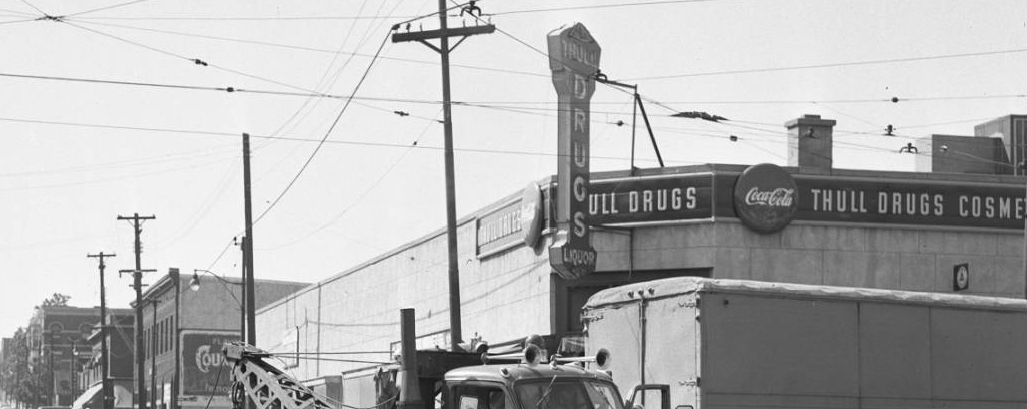
One of those businesses was the Independent Phone Company, which built a telephone exchange building at 926 North 24th Street in 1909. After just two years of operation, the phone company folded. However, the building stood for more than a century afterwards. In 1991, the State Farm Insurance Company renovated it for use as a service center, and stayed there until 2016. That year, a large corporation called CHI Health demolished the building to make way for its new University Health facility.

A popular business in the neighborhood was called Thull Drug, and it was located on the northwest corner of North 24th and Cuming. Opened in the 1890s at 24th and Seward, it moved to this intersection in the 1920s. It moved to west Omaha in the early 1960s. Another popular business was on the southwest corner here for more than 50 years, and was called Canfield’s. It was an Army-Navy surplus store before it became a sporting goods store and moved to west Omaha.

There were many other businesses in and surrounding this neighborhood, too. In the early 1960s, after Thull Drugs moved out, their building on the northwest corner of North 24th and Cuming was demolished to make room for one of the first McDonald’s restaurants in Omaha. Opening in 1962, there is still a McDonald’s at this intersection.

Current and Former Historic Sites in the Kellom Heights Neighborhood
These are historic places in the Kellom Heights neighborhood. Please share any additions or corrections in the comments section below.
- Pilgrim Baptist Church, 2501 Hamilton St.
- Site of the Negro Old Folks Home, 921 N. 25th St.
- Kellom School, N. 23th and Paul St.
- Kellom Public Pool, N. 24th and Paul St.
- Kellom Community Library, N. 24th and Paul St.
- Poor Clares Monastery, N. 30th and Hamilton St.
- Site of the Independent Telephone Company Exchange Building, 926 N. 24th St.
- Site of the Thomas Mansion, 958 N. 27th Ave.
- Rowhouses, 1001 N. 29th St.
You Might Like…
- A History of the Long School Neighborhood
- A History of Kellom Elementary School
- A History of North 24th Street
- A History of North Omaha’s Kellom Pool
- A History of the Thomas Mansion
MY ARTICLES ABOUT HISTORIC NEIGHBORHOODS IN NORTH OMAHA
National Register of Historic Places Historic Districts in North Omaha: 24th and Lake Historic District | Benson Downtown Historic District | Country Club Historic District | Dundee/Happy Hollow Historic District | Fairacres Historic District | Fort Omaha Historic District | Minne Lusa Historic District | Nicholas Street Historic District
Historic Neighborhoods in North Omaha: Bedford Place | Belvedere Point | Bemis Park | Benson | Briggs | Bungalow City | Carter Lake, Iowa | Central Park | Clifton Hill | Collier Place | Creighton University | Crown Point | DeBolt | Druid Hill | East Omaha | Fairfax | Florence | Florence Field | Fort Omaha | Fontenelle View | Gifford Park | Gold Coast (Cathedral) | High Point | Jefferson Square | Kellom Heights | Kountze Place | Lakewood Gardens | Little Russia | Long School | Malcolm X Memorial | Miller Park | Miller Park Duplex Historic District | Monmouth Park | Montclair | Near North Side | North Downtown Omaha | Omaha View | Orchard Hill | Plum Nelly | Prettiest Mile in Omaha | Prospect Place | Raven Oaks | Redman | Saratoga | Sherman | Squatter’s Row | Sulphur Springs | Ponca Hills | Wakonda | Walnut Hill | Winspear Triangle | Wyman Heights
Lost Towns in North Omaha: Benson | Briggs | Cutler’s Park | DeBolt | East Omaha | Florence | Saratoga | Sulphur Springs | Winter Quarters
Elsewhere Online
- CHI Health University Campus official website
- Kellom Place Townhomes by Seldin official website
BONUS PICS!







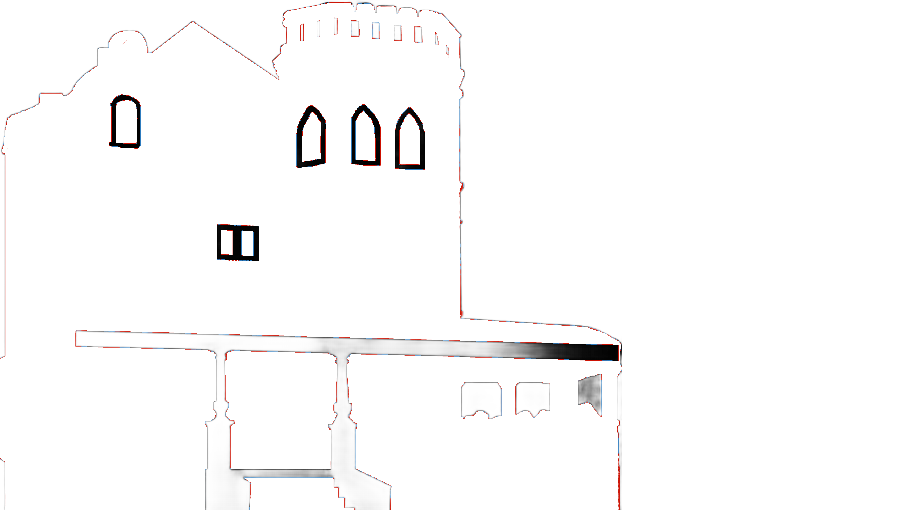

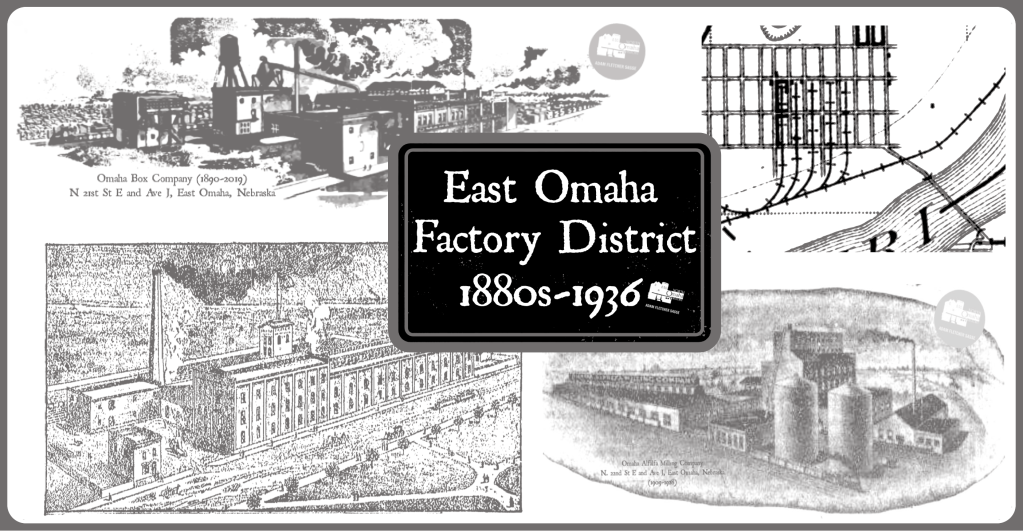
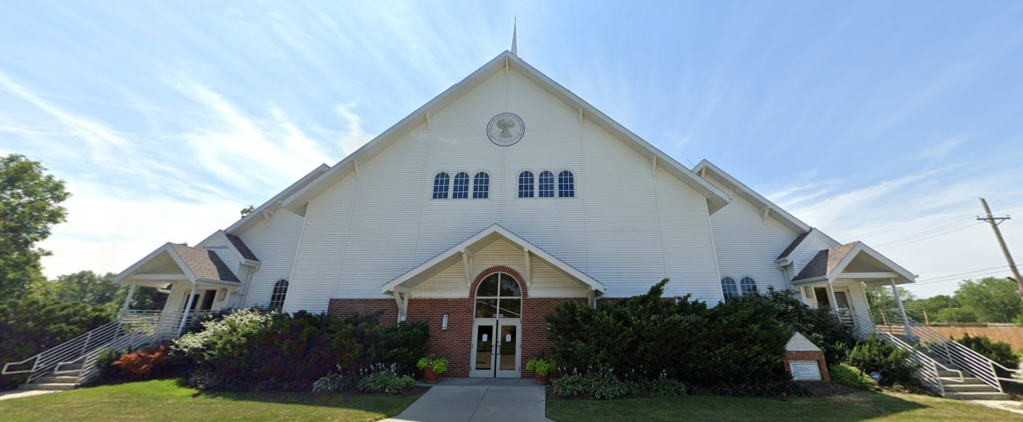
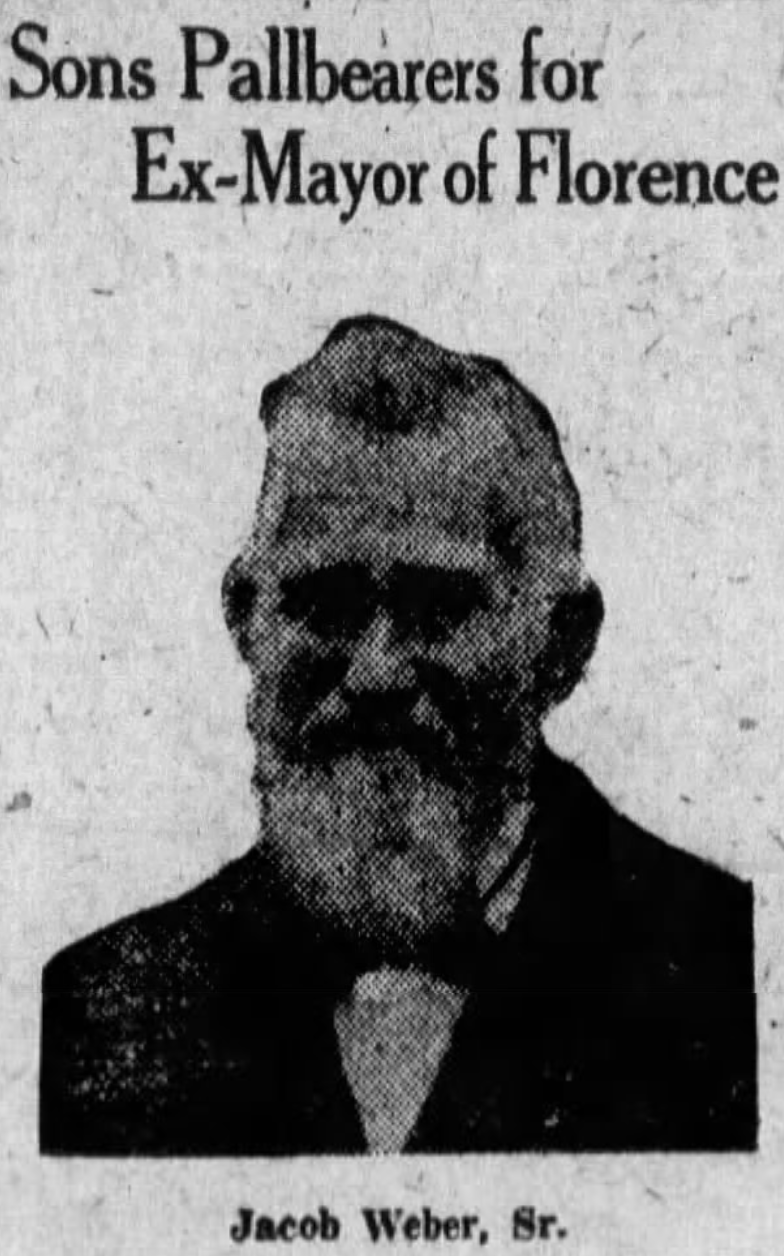
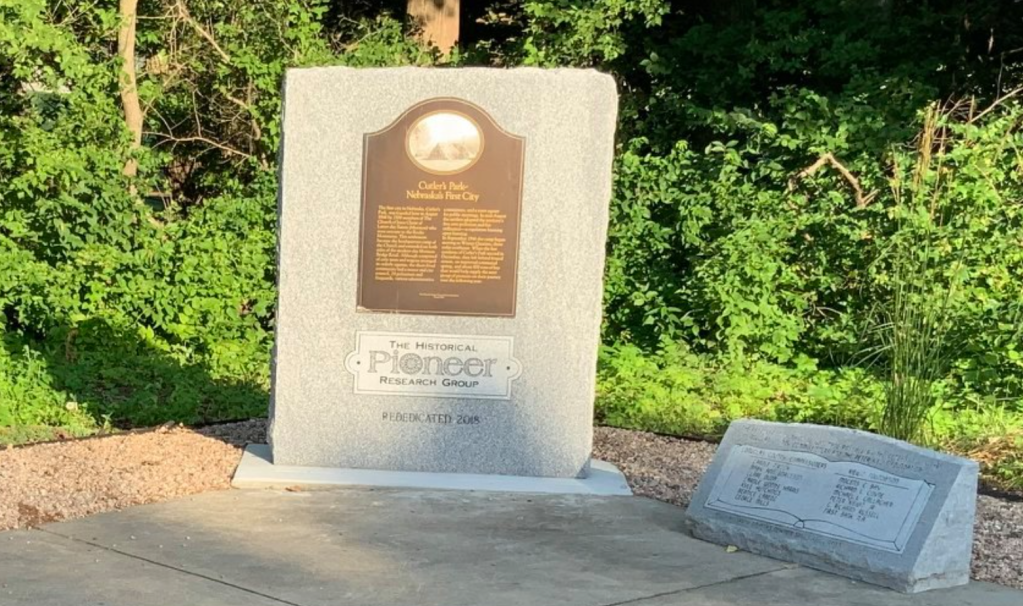
Leave a comment